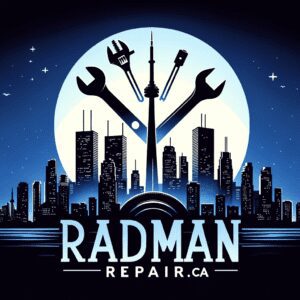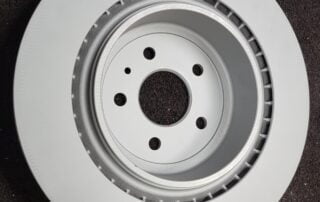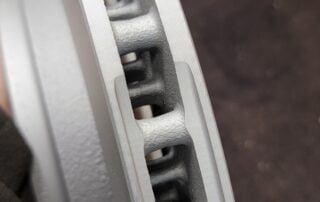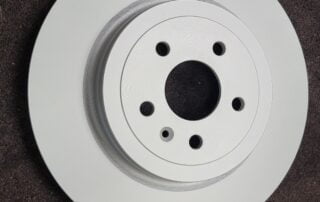Tesla Brake Service
If you have a Tesla Model 3, Model Y, Model S, or Model X, you must be loving the lack of service requirements, but brake service is one you should not skip.
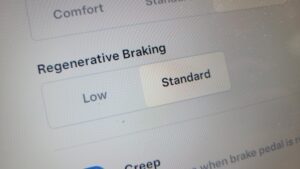
And unlike gas powered cars, Tesla’s have regenerative braking which means you’re using your braking system less on your ( Model 3, Model Y, Model S, Model X ) car/SUV. So it’s important to get your brakes serviced.
What is a brake service? Here is the scoop, we will focus the brake service on the Brake Calipers, Brake Pads, and Brake Rotors.
Brake Calipers – Brake Service (Model 3 Model Y Model S Model X)
 What is a Brake Caliper?
What is a Brake Caliper?
A brake caliper holds your brake pads in place around the rotor. When you press the brake, the caliper squeezes the brake pads against the rotor to stop the car.
How Does the Brake Service fit?
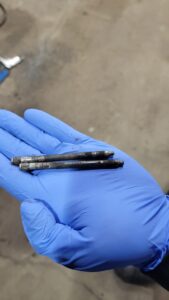
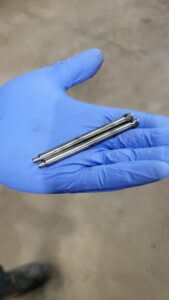
In order to press the pads against the rotor, the caliper slides them closer, eventually applying force. This stops your car. If the sliding pins on the caliper bracket have a lot of corrosion built up, they will not be able to slide, which in turn will cause the brakes to fail. With regular/normal use, the heat burns off the moisture on your pads and rotor. With regenerative braking, and less brake use, moisture builds up and eventually more rust. There is a good side though! If you’re braking system is functioning the way it should, it’s not leaking or allowing moisture in, your brake fluid will last a very long time.
Tesla recommends cleaning and lubricating all brake calipers every 12 months or 20,000 km for vehicles (‘The Brake Service’). This involves removing everything, cleaning, and ensuring that the calipers can move the pads without obstruction.
Brake Pads – Brake Service (Model 3 Model Y Model S Model X)
Available for : Model 3, Model Y, Model S, Model X
We check pads; pads may or may not need to be replaced. With regenerative braking doing most of the work, changing the fluid is not necessary as often, so we test it first. Unfortunately the pads and rotors that Tesla uses are the same as the ones used on every car. An EV has very different needs.
Brake pads usually have the same components. For the caliper to ‘hold’ them in place, it needs a backing plate. This is where the difference is. There are a couple of variations:
- Metal plate glued to the pad.
- powder coated (metal plate) to prevent rust, then glued to the pad.
- Galvanized plate that is glued to the pad.
- Galvanized plate that is connected to the pad using no glue and a patented process.
Our focus is on the cause of rust. Powder coating the plate is a temporary measure. All options above except the last will corrode, and a brake service can’t fix that. We recommend brake pads that work better, and resist rust. Our preferred pads meet these criteria:
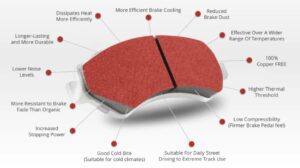
- 100% copper free (for the environment)
- 100% recyclable (for the environment)
- Reduce noise (for you)
- Reduce vibration (for you)
- Will last longer
- No glue
- No rust attracting metals
- Last longer (pads)
The result is a win-win for the environment and your peace of mind.
Brake Rotors
Available for : Model 3, Model Y, Model S, Model X
Rotors also have a few variations. Smooth, drilled, slotted, vented, and others that dissipate heat but unnecessary since we don’t even create enough heat to require a brake fluid change. Now let’s look at the materials:
- Cast Iron – The most common, durable, heavy.
- Steel – Lighter than iron, not as durable.
- Layered Steel – Better than the above, but more expensive, not normally for the consumer.
- Aluminum – lighter, but prone to warping with heat.
- High Carbon – These are actually a composite with iron. Quite expensive.
- Ceramic – Likely the best rotor out there, but very expensive.
Materials mentioned above deal with weight and performance. Our concern is corrosion. Brake service and possibly brake pad replacement. Our preferred German made rotors are dipped, not just coated for maximum rust resistance.
Our Tesla Brake Service (Model 3 Model Y Model S Model X)
We believe that anything worth being done, should be done right. That’s why our brake service is the best. Our brake service includes:
- Clean any corrosion off your calipers and related parts
- Inspect brake pads for deterioration and wear
- Ensure Calipers slide brake pads as expected
- We include the parking brake (that others do not)
- *Ask Tesla if they include the parking brake
- Clean rotor surface
- Clean Wheel backing
- Coat cleaned areas
- Test brake fluid
If you need brake pads and rotors, we provide you with choices that others do not. See the costs from Tesla here.
Note: If your car is used for track days, performance driving, or towing, this results in heavy brake usage and may impact the life of your brake system. If in doubt, stop by for a brake service!
Check for Tesla recalls.
